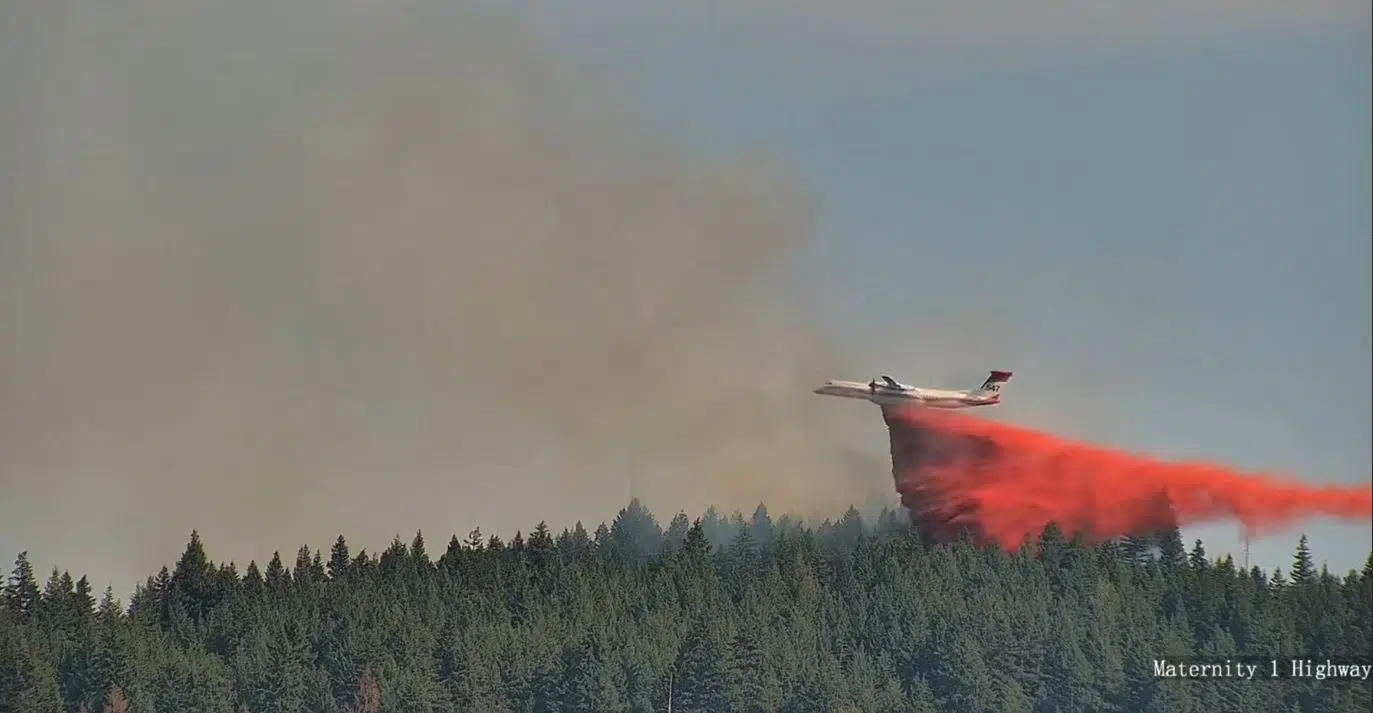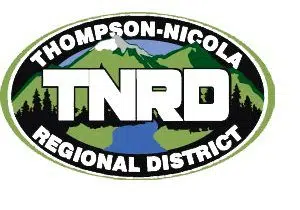
An air tanker dropping fire retardant on the Stolle Creek wildfire near Little Fort. (Photo via Pam Jim/Facebook)
The B.C. government has already spent about $585-million on this year’s wildfire season, more than double the $204 million that was budgeted for.
While that number is expected to continue to rise in the coming weeks, Forests Minister Bruce Ralston says the province is not concerned about running out of money.
“There is no financial challenge to the province,” he said Monday. “The money is there, if its required and when it is required to spend. Whatever it takes to protect people and property, the money is there.”
Emergency Management Minister, Bowinn Ma, said that half billion dollar figure only includes direct firefighting costs, and not other expenses incurred by the government.
“It won’t include the amount spent by government supporting evacuees and supporting communities in other ways,” she said. “It also won’t include expenditures by other ministries such as the Ministry of Agriculture and Ministry of Transportation and Infrastructure in their response work as well.”
Cliff Chapman, the director of Provincial Operations for the BC Wildfire Service, says the two biggest costs it incurs in a fire season are aircraft and ground personnel.
“Its about 40 per cent on aviation assets and 60 per cent on everything else,” Chapman said. “A significant amount of expenditure goes towards our airtanker fleet and our rotary wing helicopter fleet.”
Chapman says the BC Wildfire Service currently has 35 fixed-wing airplanes – more than it normally has – and 130 fixed-wing helicopters under contract. That’s in addition to the thousands of local and international ground crews and other support staff working across the province.
“Firefighting is an inherently expensive response business to get into,” Chapman added. “Those aviation assets really add up, in addition to when we bring in ground crews whether that be from B.C. or beyond.”
The 2023 fire season – the worst on record in B.C. – has already burned 18,040 sq. kilometres of land. Most of that, 13,725 sq. kilometres was in the Prince George Fire Centre, largely due to the massive 5,832 sq. kilometre Donnie Creek fire, the largest blaze on record in the 102-year history of the provincial firefighting effort.
By comparison, the 2021 fire season – which burned 8,693 sq. kilometres of land – cost an estimated $718.8 million. The 2018 season – which burned 13,543 sq. kilometres of land – cost $615 million, while the 2017 season – which burned 12,161 sq. kilometres of land – cost $649 million.
The ten year average, according to government figures, is 4,074 sq. kilometres of land burned at a cost of $316.9 million.
“You’re right to note that it has been higher in other years, and indeed lower in other years,” Ralston said, noting it depends on the intensity of the fire season.
“Unfortunately, we are still in the midst of one of our most challenging wildfire seasons on record. It is not over by any means.”

A snapshot of the costs to fight fires in B.C. over the past decade. (Photo via BC Wildfire Service)

















